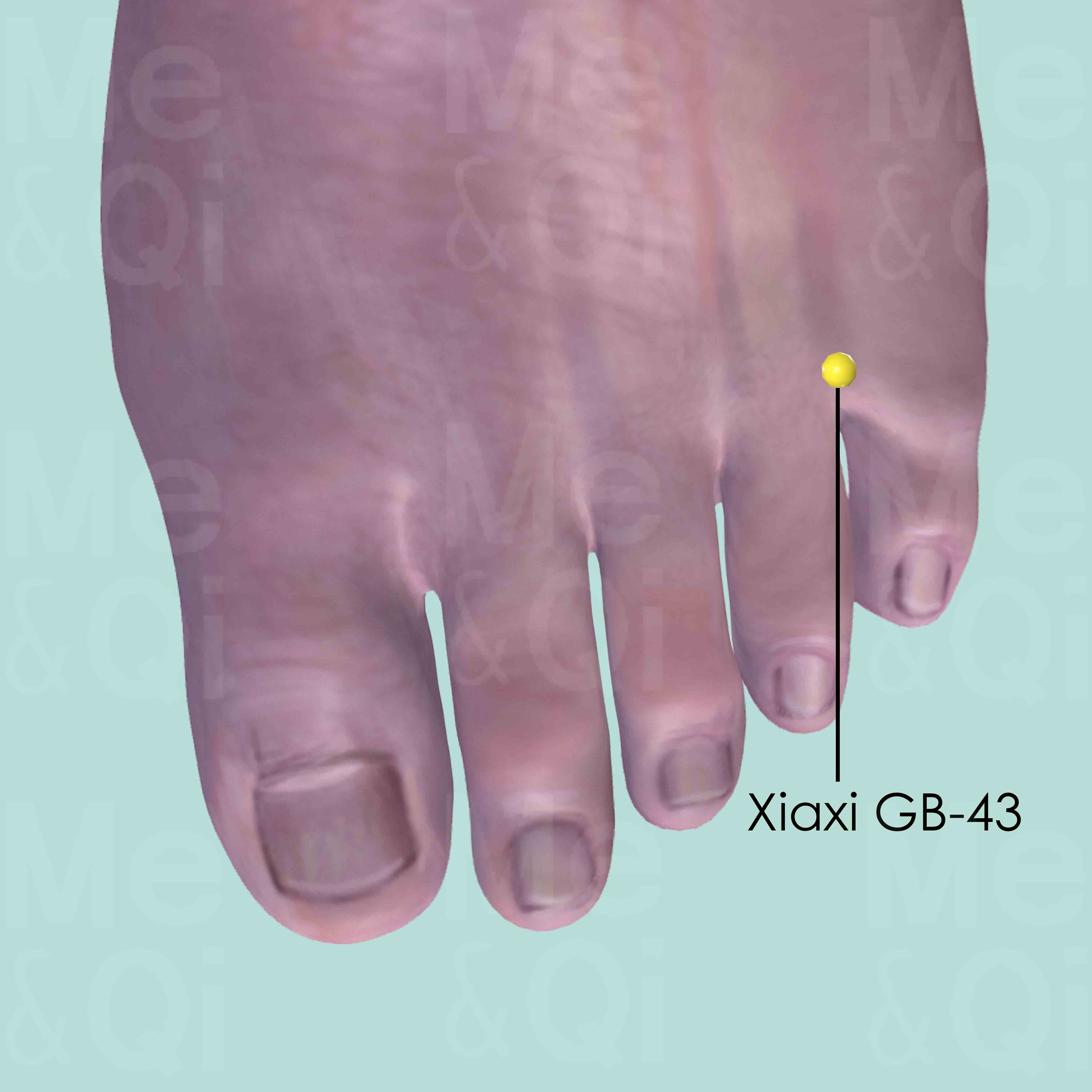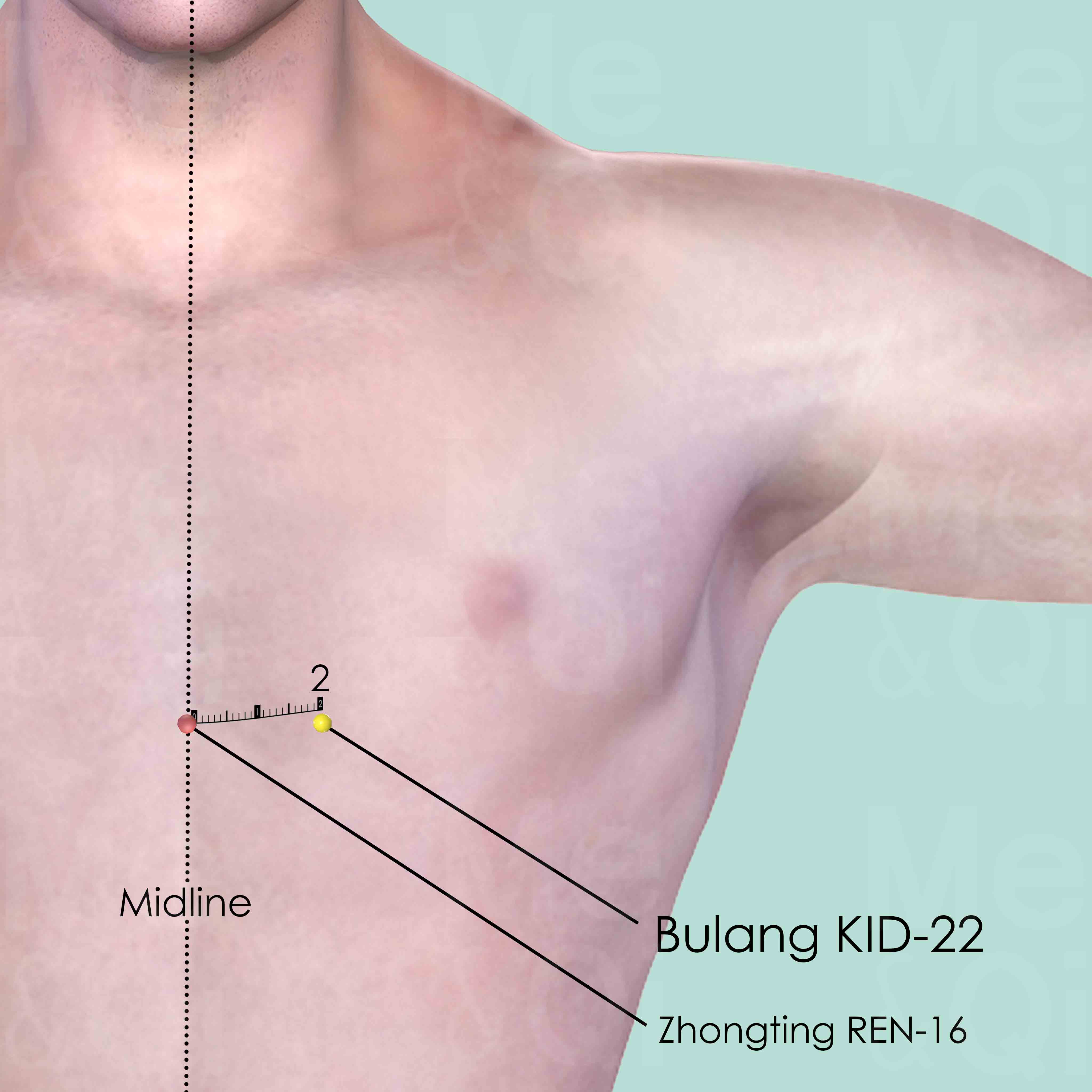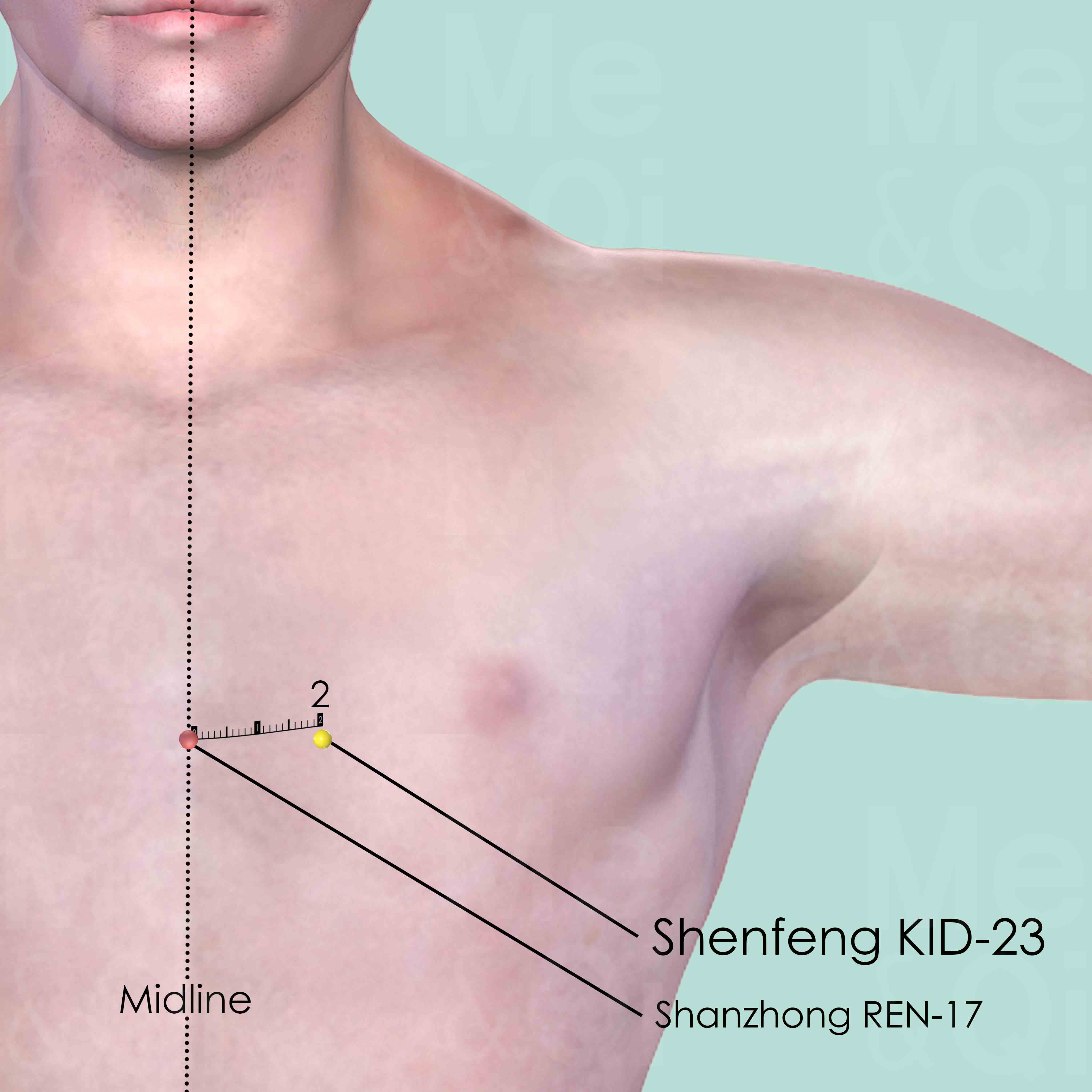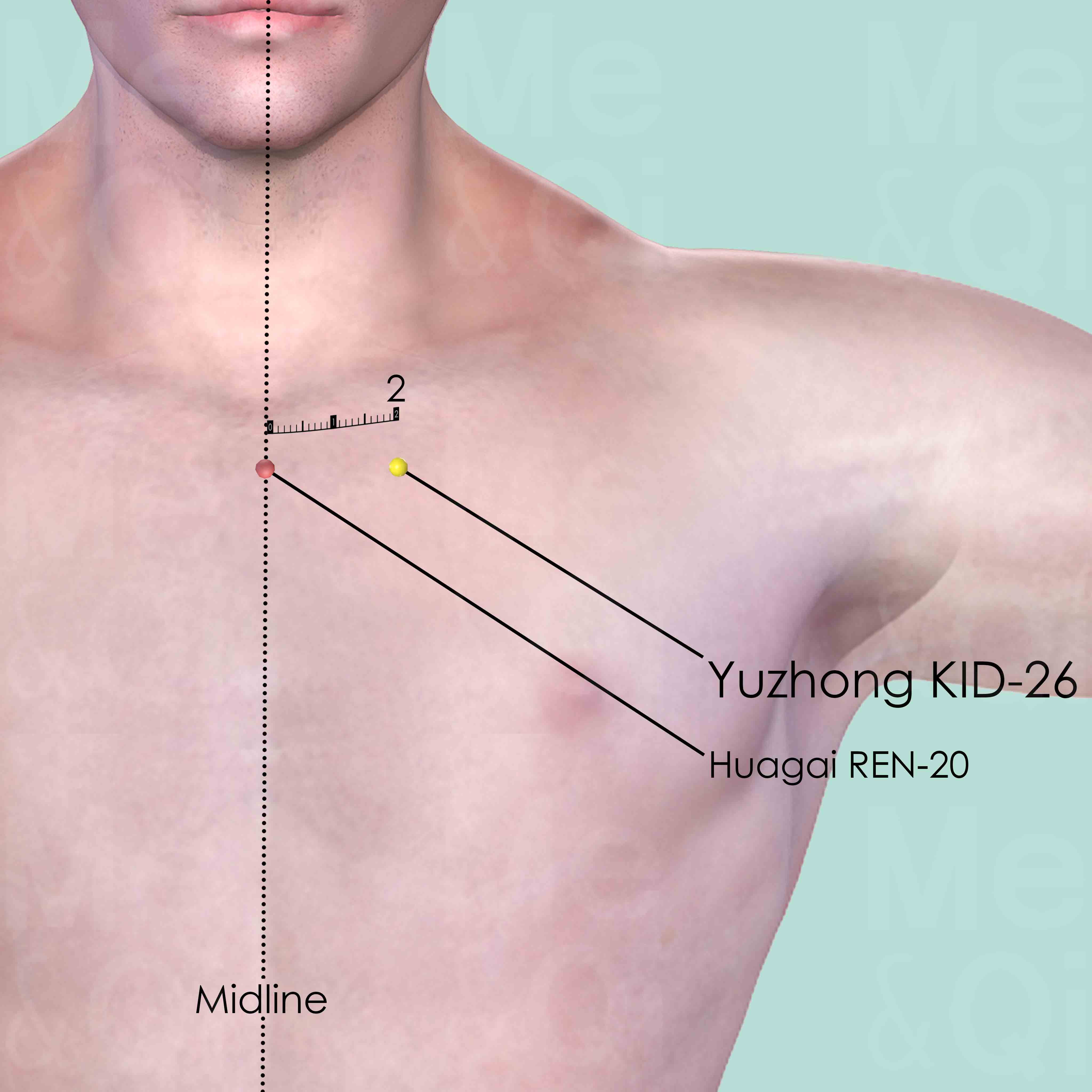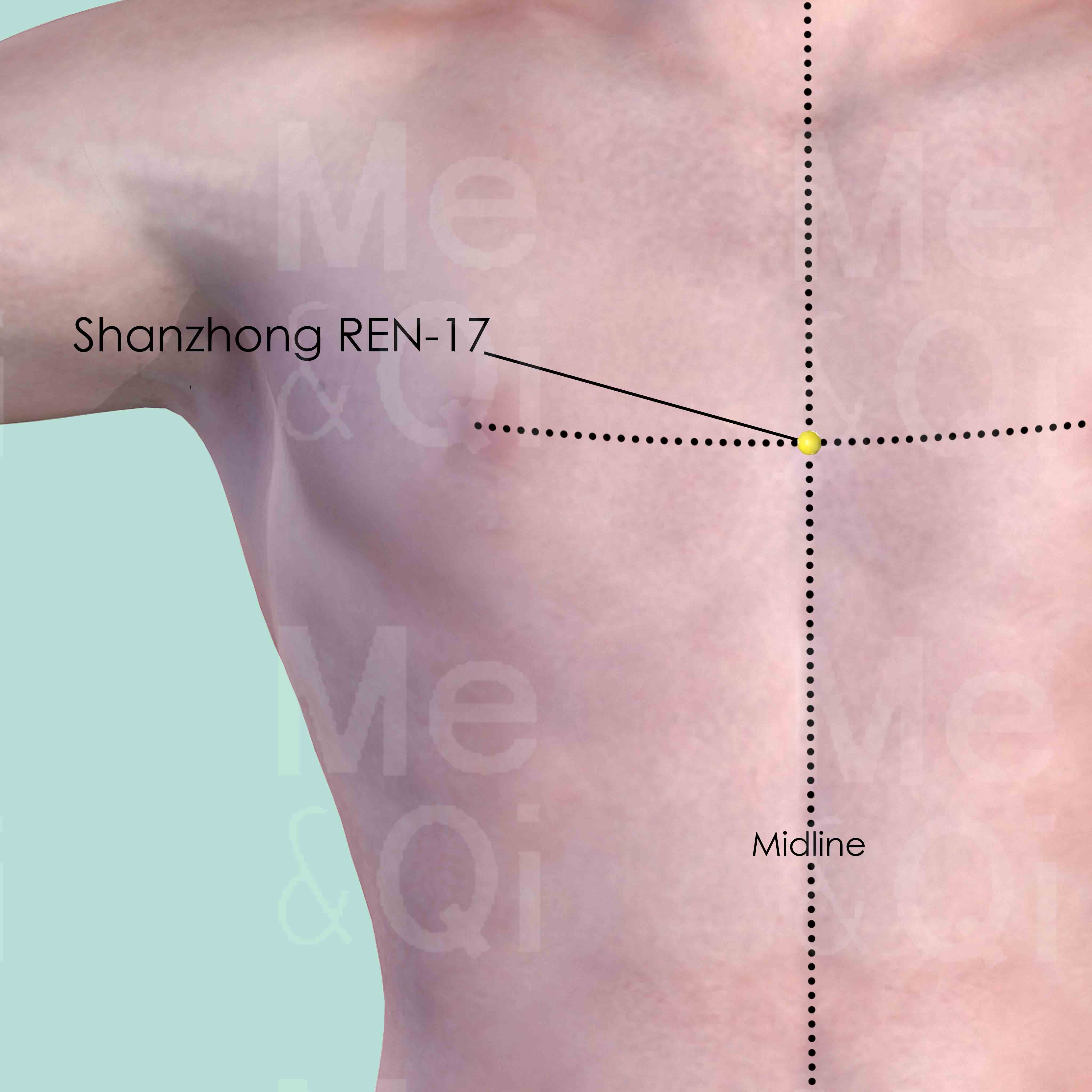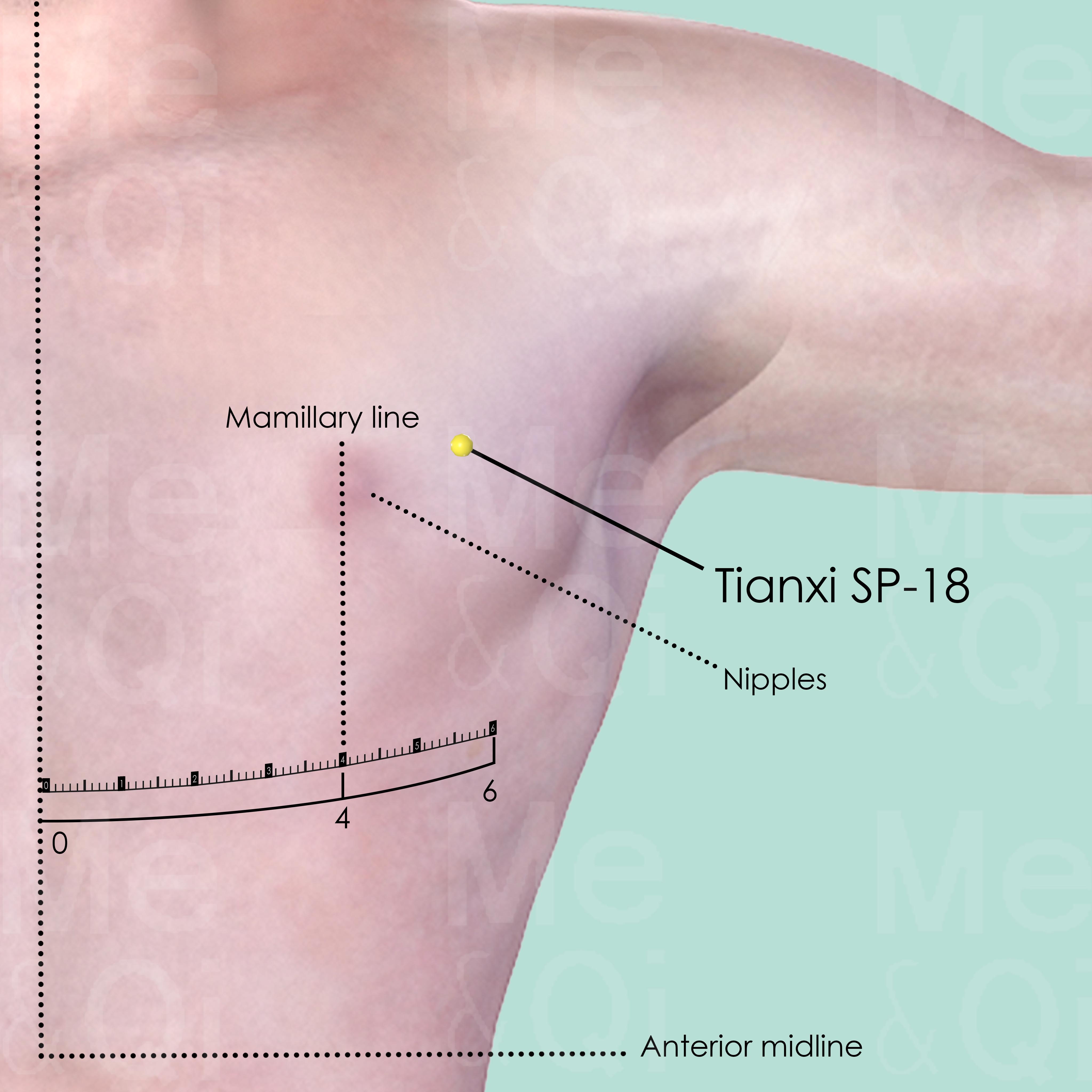Lumpsaccording to TCM
Symptom family: Lumps, Swellings & Abscesses
Sub-symptom(s): Soft Palpable Lumps Neck Lumps Chest Lump Breast Lumps
Did you mean? Swelling
What are Lumps?
Lumps refer to any noticeable swelling or bulge under the skin, varying greatly in size and texture. They can appear anywhere on the body and may result from numerous causes, including infections, inflammation, tumors, or cysts. Lumps are common and often benign, but depending on their cause and characteristics, they can sometimes indicate a more serious condition. Their nature—whether soft, hard, painful, or painless—provides essential clues to their underlying causes.
How does TCM view Lumps?
Traditional Chinese Medicine (TCM) interprets lumps as manifestations of internal imbalances and blockages within the body's energy pathways, or meridians. According to TCM, the presence of lumps signals disharmony among the body's vital energies, particularly Qi (life force), Blood, Phlegm, and bodily Fluids.
The treatment focuses on restoring balance, enhancing Qi flow, and addressing the specific disharmony causing the lumps, with the understanding that the external symptom (the lump) is a reflection of an internal ailment.
Root Causes of Lumps in TCM
In TCM, lumps are often attributed to the Stagnation of Qi and Blood or the accumulation of Phlegm and Heat. For instance, Phlegm and Blood Stasis can lead to palpable masses that are either movable or fixed and painful. These conditions might arise from emotional stress, dietary imbalances, external pathogenic factors, or a combination of these. TCM treatments aim to invigorate Blood, transform Phlegm, clear Heat, and circulate Qi to dissolve lumps and restore health.
Explore below more details about what might cause Lumps according to TCM.
Blood Stasis
Blood Stasis in TCM is a concept where the blood flow in the body is not as smooth or efficient as it should be. Imagine a river that's supposed to flow freely, but instead, it's getting blocked or moving too slowly in some parts. This can lead to various health issues, like pain that feels sharp or stabbing, dark bruises, and a complexion that looks purplish. TCM believes that good health relies on the smooth and vibrant flow of Qi and blood throughout the body, so when blood gets stuck, it's like a traffic jam in your body, leading to discomfort or health problems.... see more
Blood Stasis Patterns That Can Lead to Lumps
Common Symptoms: Abdominal Masses Menstrual Cramps Dark Menstrual Clots Dark Menstrual Blood Amenorrhea Irregular Periods Restlessness Dark Face
| Pattern Name | Relevant Symptoms | Relevant Formulas |
|---|---|---|
| Blood Stagnation | Lumps, Dark face, Purple lips, Stabbing fixed pain, Abdominal masses, Purple nails, Menstrual cramps, Dark menstrual clots, Dark menstrual blood... see more | Tao He Cheng Qi Tang | Da Huang Mu Dan Pi Tang | Gui Zhi Fu Ling Wan | Di Dang Tang | Dan Shen Yin | Da Huang Zhe Chong Wan | San Zhong Kui Jian Tang | Hai Tong Pi Tang | Huang Qi Gui Zhi Wu Wu Tang |
| Qi And Blood Stagnation | Breast lumps, Chest distension, Chest pain, Stabbing fixed pain, Dark face, Purple lips, Purple nails, Irritability, Mood swings, Depression, Mottled skin, Foot edema, Abdominal masses, Melena black tarry stool, Menstrual cramps, Amenorrhea, Dark menstrual clots, Dark menstrual blood, Prolonged lochia, Irregular periods... see more | Gui Zhi Fu Ling Wan | Ge Xia Zhu Yu Tang | Wen Jing Tang |
| Blood Stagnation in the Directing and Penetrating Vessels | Breast lumps, Irregular periods, Brown vaginal discharge, Dark menstrual clots, Menstrual cramps, Dark menstrual blood, Prolonged lochia, Lower abdominal pain, Umbilical pain, Breast engorgement, Breast pain... see more | Gui Zhi Fu Ling Wan |
Qi Stagnation
Qi Stagnation in TCM is like having a traffic jam in your body's energy system. Qi, the vital life force that flows through your body, is supposed to move smoothly to maintain health and balance. But with Qi Stagnation, this flow gets blocked or slowed down, like cars stuck on a highway. This can lead to symptoms like feeling stressed, emotional mood swings, and physical discomfort, often described as a feeling of fullness or tightness, especially in the chest or abdomen. It's as though the body's internal energy circulation is disrupted, causing various issues. TCM sees this as an energy flow problem, different from modern medicine's focus on specific physiological processes.... see more
Qi Stagnation Patterns That Can Lead to Lumps
Common Symptoms: Depression Irritability Mood Swings Irregular Periods Breast Engorgement Scanty Menstruation Clots In Blood Abdominal Pain
| Pattern Name | Relevant Symptoms | Relevant Formulas |
|---|---|---|
| Qi Stagnation | Soft palpable lumps, General fullness, Moving pain, Depression, Irritability, Mood swings, Sighing | Xiao Yao San | Chai Hu Shu Gan San | Si Mo Tang | Qi Ge San |
| Liver Qi Stagnation | Neck lumps, Breast lumps, Breast nodules, Hypochondriac distention, Chest distension, Upper abdominal distension, Abdominal distention, Sighing, Melancholia, Depression, Mood swings, Irregular periods, Globus sensation, Pre menstrual breast distension, Pre menstrual tension, Anxiety, Anger... see more | Xiao Yao San | Chai Hu Shu Gan San | Jia Wei Xiao Yao San | Yue Ju Wan | Yi Guan Jian | Gua Lou San | Xia Ru Yong Quan San |
| Qi And Blood Stagnation | Breast lumps, Chest distension, Chest pain, Stabbing fixed pain, Dark face, Purple lips, Purple nails, Irritability, Mood swings, Depression, Mottled skin, Foot edema, Abdominal masses, Melena black tarry stool, Menstrual cramps, Amenorrhea, Dark menstrual clots, Dark menstrual blood, Prolonged lochia, Irregular periods... see more | Gui Zhi Fu Ling Wan | Ge Xia Zhu Yu Tang | Wen Jing Tang |
Phlegm
In TCM "Phlegm" as a pattern of disharmony is a complex concept that extends beyond the physical manifestation of mucus. It represents a pathological factor that can disrupt the flow of Qi (vital energy) and blood, leading to various health issues. Phlegm in TCM is seen as a sticky, turbid substance arising from the body's inability to metabolize fluids properly, often due to a dysfunction of the spleen. It's not only associated with respiratory problems like cough and congestion but also with systemic issues. Symptoms can include a feeling of heaviness, mental cloudiness, dizziness, and in some cases, the formation of lumps or masses. Phlegm can even be "invisible," contributing to emotional disturbances like depression or stress. ... see more
Phlegm Patterns That Can Lead to Lumps
Common Symptoms: Stifling Sensation In The Chest Dizziness Chest Distension Hepatitis Coughing Shortness Of Breath Wheezing Sputum
| Pattern Name | Relevant Symptoms | Relevant Formulas |
|---|---|---|
| Phlegm-Heat in the Lungs | Clump, Clumping in the chest, Coughing, Shortness of breath, Wheezing, Stifling sensation in the chest, Sputum, Feeling hot, Thirst, Head and body heaviness, Dizziness, Copious thick yellow sputum... see more | Xiao Xian Xiong Tang |
| Phlegm | Lumps, Feeling of oppression of the chest, Head fog, Dizziness | Er Chen Tang | Liu Jun Zi Tang | Ban Xia Bai Zhu Tian Ma Tang | Wen Dan Tang | Hao Qin Qing Dan Tang | Xing Su San |
Heat
In TCM "Heat" signifies an excess of Yang energy, leading to an imbalance where heat predominates over the body's cool Yin aspects. This condition is metaphorically akin to an internal over-heating. Symptoms indicative of Heat can include feelings of warmth, fever, sweating, irritability, red face, thirst with a preference for cold drinks, and a rapid pulse. The tongue may appear red with a yellow coating. Unlike the common interpretation of heat in terms of temperature, in TCM, it represents a state of hyperactivity or inflammation in the body.... see more
Heat Patterns That Can Lead to Lumps
Common Symptoms: Thirst Fever Constipation Coughing Shortness Of Breath Wheezing Stifling Sensation In The Chest Sputum
| Pattern Name | Relevant Symptoms | Relevant Formulas |
|---|---|---|
| Phlegm-Heat in the Lungs | Clump, Clumping in the chest, Coughing, Shortness of breath, Wheezing, Stifling sensation in the chest, Sputum, Feeling hot, Thirst, Head and body heaviness, Dizziness, Copious thick yellow sputum... see more | Xiao Xian Xiong Tang |
| Stomach Fire or Stomach Heat | Breast lumps, Breast nodules, Toothache, Headaches, Stomatitis, Periodontitis, Glossitis, Trigeminal neuralgia, Diabetes, Viral myocarditis, Breast engorgement, Breast hardness... see more | Gua Lou San |
Lung
In TCM the Lungs are seen as the organ responsible for controlling Qi and respiration, as well as being a key part of the body's defensive system. They are thought to maintain the balance and flow of air and moisture, and are closely linked to the skin and hair. When the Lungs are imbalanced or malfunctioning in TCM, it can lead to respiratory issues like coughing or asthma, a weakened immune system, dry skin, and emotional disturbances such as sadness or grief. These symptoms are believed to arise from disruptions in the Lungs' ability to regulate Qi and protect the body, highlighting their central role in maintaining overall health and well-being.... see more
Lung Patterns That Can Lead to Lumps
| Pattern Name | Relevant Symptoms | Relevant Formulas |
|---|---|---|
| Phlegm-Heat in the Lungs | Clump, Clumping in the chest, Coughing, Shortness of breath, Wheezing, Stifling sensation in the chest, Sputum, Feeling hot, Thirst, Head and body heaviness, Dizziness, Copious thick yellow sputum... see more | Xiao Xian Xiong Tang |
Liver
In TCM the Liver is viewed as the organ responsible for the smooth flow of Qi, Blood, and emotions throughout the body. It plays a key role in regulating mood, storing blood, supporting digestion, and ensuring the health of tendons and eyes. When the Liver malfunctions or is imbalanced in TCM, it can lead to a range of issues such as irritability, mood swings, menstrual irregularities, eye problems, and muscular stiffness or pain. A malfunctioning Liver in TCM reflects not only physical disturbances but also emotional and mental disharmony, emphasizing the holistic approach of TCM in addressing health and wellness.... see more
Liver Patterns That Can Lead to Lumps
| Pattern Name | Relevant Symptoms | Relevant Formulas |
|---|---|---|
| Liver Qi Stagnation | Neck lumps, Breast lumps, Breast nodules, Hypochondriac distention, Chest distension, Upper abdominal distension, Abdominal distention, Sighing, Melancholia, Depression, Mood swings, Irregular periods, Globus sensation, Pre menstrual breast distension, Pre menstrual tension, Anxiety, Anger... see more | Xiao Yao San | Chai Hu Shu Gan San | Jia Wei Xiao Yao San | Yue Ju Wan | Yi Guan Jian | Gua Lou San | Xia Ru Yong Quan San |
Stomach
In TCM the Stomach is regarded as the "sea of nourishment," pivotal for digesting food and transforming it into Qi and blood. It works closely with the Spleen to distribute these essential nutrients throughout the body. When the Stomach is out of balance or malfunctions in TCM, it often leads to digestive problems such as bloating, nausea, vomiting, poor appetite, or a feeling of fullness. There may also be issues like acid reflux or a sour taste in the mouth. Emotionally, an imbalanced Stomach can contribute to excessive worry and overthinking, reflecting the TCM belief that physical and emotional well-being are deeply interconnected.... see more
Stomach Patterns That Can Lead to Lumps
| Pattern Name | Relevant Symptoms | Relevant Formulas |
|---|---|---|
| Stomach Fire or Stomach Heat | Breast lumps, Breast nodules, Toothache, Headaches, Stomatitis, Periodontitis, Glossitis, Trigeminal neuralgia, Diabetes, Viral myocarditis, Breast engorgement, Breast hardness... see more | Gua Lou San |
TCM Herbal Formulas for Lumps
For lumps resulting from Phlegm and Heat accumulation, formulas like Xiao Xian Xiong Tang, which includes Snake Gourds (Gua Lou) to transform Phlegm and clear Heat, are commonly prescribed. Similarly, for lumps caused by Blood Stasis, Tao He Cheng Qi Tang, featuring Peach Kernels (Tao Ren), helps invigorate Blood and dispel Stasis.
These formulas, among others, are tailored to address the specific pattern of disharmony identified through TCM diagnostic methods, ensuring a holistic approach to treatment that targets both the symptoms and their root causes.
Explore below some TCM herbal formulas used to address lumps, organized by cause and by formula type.
- By Cause
- By Formula Type
- Blood Stasis
- Qi Stagnation
- Phlegm
- Heat
- View More Causes
- Formulas that invigorate blood and dispel blood stagnation
- Formulas that promote qi movement
- Formulas that clear internal abscesses and sores
- Formulas that dry dampness and transform phlegm
- Formulas that harmonize liver-Spleen
- Formulas that clear heat and transform phlegm
- Formulas that clear external abscesses and sores
- External formulas for external disorders
- Formulas that warm the meridians and disperse cold
- Formulas that tonify qi
- Formulas that transform phlegm and extinguish wind
- Formulas that harmonize lesser yang-warp disorders
- Formulas that disperse dryness and moisten
- Formulas that nourish yin and tonify
- Formulas that clear heat and resolve toxicity
Top Formula for Blood Stasis:
Gui Zhi Fu Ling Wan
Suitable for Blood Stasis patterns that may cause lumps, such as Blood Stagnation or Blood Stagnation in the Directing and Penetrating Vessels
Learn moreAll Formulas Recommended for Lumps Caused by Blood Stasis
| Formula | Patterns Suitable For |
|---|---|
| Gui Zhi Fu Ling Wan | Blood Stagnation, Blood Stagnation in the Directing and Penetrating Vessels, Qi And Blood Stagnation... see more |
| Tao He Cheng Qi Tang | Blood Stagnation |
| Da Huang Mu Dan Pi Tang | Blood Stagnation |
| Di Dang Tang | Blood Stagnation |
| Dan Shen Yin | Blood Stagnation |
| Da Huang Zhe Chong Wan | Blood Stagnation |
| San Zhong Kui Jian Tang | Blood Stagnation |
| Hai Tong Pi Tang | Blood Stagnation |
| Huang Qi Gui Zhi Wu Wu Tang | Blood Stagnation |
| Ge Xia Zhu Yu Tang | Qi And Blood Stagnation |
| Wen Jing Tang | Qi And Blood Stagnation |
Top Formula for Qi Stagnation:
Xiao Yao San
Suitable for Qi Stagnation patterns that may cause lumps, such as Qi Stagnation or Liver Qi Stagnation
Learn moreAll Formulas Recommended for Lumps Caused by Qi Stagnation
| Formula | Patterns Suitable For |
|---|---|
| Xiao Yao San | Qi Stagnation, Liver Qi Stagnation |
| Chai Hu Shu Gan San | Qi Stagnation, Liver Qi Stagnation |
| Gui Zhi Fu Ling Wan | Qi And Blood Stagnation |
| Gua Lou San | Liver Qi Stagnation |
| Si Mo Tang | Qi Stagnation |
| Qi Ge San | Qi Stagnation |
| Jia Wei Xiao Yao San | Liver Qi Stagnation |
| Yue Ju Wan | Liver Qi Stagnation |
| Yi Guan Jian | Liver Qi Stagnation |
| Xia Ru Yong Quan San | Liver Qi Stagnation |
| Ge Xia Zhu Yu Tang | Qi And Blood Stagnation |
| Wen Jing Tang | Qi And Blood Stagnation |
Top Formula for Phlegm:
Xiao Xian Xiong Tang
Suitable for Phlegm patterns that may cause lumps, such as Phlegm-Heat in the Lungs
Learn moreAll Formulas Recommended for Lumps Caused by Phlegm
| Formula | Patterns Suitable For |
|---|---|
| Xiao Xian Xiong Tang | Phlegm-Heat in the Lungs |
| Er Chen Tang | Phlegm |
| Liu Jun Zi Tang | Phlegm |
| Ban Xia Bai Zhu Tian Ma Tang | Phlegm |
| Wen Dan Tang | Phlegm |
| Hao Qin Qing Dan Tang | Phlegm |
| Xing Su San | Phlegm |
Top Formula for Heat:
Gua Lou San
Suitable for Heat patterns that may cause lumps, such as Stomach Fire or Stomach Heat
Learn moreAll Formulas Recommended for Lumps Caused by Heat
| Formula | Patterns Suitable For |
|---|---|
| Gua Lou San | Stomach Fire or Stomach Heat |
| Xiao Xian Xiong Tang | Phlegm-Heat in the Lungs |
Formulas that invigorate Blood and dispel Blood Stagnation
These formulas are suitable for some lumps-causing patterns like Blood Stagnation or Blood Stagnation in the Directing and Penetrating Vessels.
One such formula is Gui Zhi Fu Ling Wan, with cinnamon twigs as a key herb.
Other formulas of this category are listed in the table below.
All "formulas that invigorate blood and dispel blood stagnation" recommended for lumps
| Formula | Patterns Suitable For (if applicable) |
|---|---|
| Gui Zhi Fu Ling Wan | Blood Stagnation, Blood Stagnation in the Directing and Penetrating Vessels, Qi And Blood Stagnation... see more |
| Tao He Cheng Qi Tang | Blood Stagnation |
| Di Dang Tang | Blood Stagnation |
| Dan Shen Yin | Blood Stagnation |
| Da Huang Zhe Chong Wan | Blood Stagnation |
| Xia Ru Yong Quan San | Liver Qi Stagnation |
| Ge Xia Zhu Yu Tang | Qi And Blood Stagnation |
| Wen Jing Tang | Qi And Blood Stagnation |
Formulas that clear internal abscesses and sores
These formulas are suitable for some lumps-causing patterns like Jealous Breast (Du Ru) or Blow Breast (Chui Ru).
One such formula is Tuo Li Xiao Du San, with milkvetch root as a key herb.
Other formulas of this category are listed in the table below.
All "formulas that clear internal abscesses and sores" recommended for lumps
| Formula | Patterns Suitable For (if applicable) |
|---|---|
| Tuo Li Xiao Du San | Jealous Breast (Du Ru), Blow Breast (Chui Ru) |
| Da Huang Mu Dan Pi Tang | Blood Stagnation |
Formulas that promote Qi movement
These formulas are suitable for some lumps-causing patterns like Qi Stagnation or Liver Qi Stagnation.
One such formula is Chai Hu Shu Gan San, with bupleurum root as a key herb.
Other formulas of this category are listed in the table below.
All "formulas that promote qi movement" recommended for lumps
| Formula | Patterns Suitable For (if applicable) |
|---|---|
| Chai Hu Shu Gan San | Qi Stagnation, Liver Qi Stagnation |
| Si Mo Tang | Qi Stagnation |
| Qi Ge San | Qi Stagnation |
| Yue Ju Wan | Liver Qi Stagnation |
Formulas that harmonize Liver-Spleen
These formulas are suitable for some lumps-causing patterns like Qi Stagnation or Liver Qi Stagnation.
One such formula is Xiao Yao San, with bupleurum root as a key herb.
Other formulas of this category are listed in the table below.
All "formulas that harmonize liver-Spleen" recommended for lumps
| Formula | Patterns Suitable For (if applicable) |
|---|---|
| Xiao Yao San | Qi Stagnation, Liver Qi Stagnation |
| Jia Wei Xiao Yao San | Liver Qi Stagnation |
Formulas that clear Heat and resolve toxicity
These formulas are suitable for some lumps-causing patterns like Liver Qi Stagnation or Stomach Fire or Stomach Heat.
One such formula is Gua Lou San, with snake gourd as a key herb.
Formulas that dry Dampness and transform Phlegm
These formulas are suitable for some lumps-causing patterns like Phlegm.
One such formula is Er Chen Tang, with crow-dipper rhizome as a key herb.
Other formulas of this category are listed in the table below.
All "formulas that dry dampness and transform phlegm" recommended for lumps
| Formula | Patterns Suitable For (if applicable) |
|---|---|
| Er Chen Tang | Phlegm |
| Wen Dan Tang | Phlegm |
Formulas that clear Heat and transform Phlegm
These formulas are suitable for some lumps-causing patterns like Phlegm-Heat in the Lungs.
One such formula is Xiao Xian Xiong Tang, with snake gourd as a key herb.
Formulas that clear external abscesses and sores
These formulas are suitable for some lumps-causing patterns like Blood Stagnation.
One such formula is San Zhong Kui Jian Tang, with phellodendron bark as a key herb.
External formulas for External disorders
These formulas are suitable for some lumps-causing patterns like Blood Stagnation.
One such formula is Hai Tong Pi Tang, with erythrinae bark as a key herb.
Formulas that warm the Meridians and disperse Cold
These formulas are suitable for some lumps-causing patterns like Blood Stagnation.
One such formula is Huang Qi Gui Zhi Wu Wu Tang, with milkvetch root as a key herb.
Formulas that tonify Qi
These formulas are suitable for some lumps-causing patterns like Phlegm.
One such formula is Liu Jun Zi Tang, with ginseng as a key herb.
Formulas that transform Phlegm and extinguish Wind
These formulas are suitable for some lumps-causing patterns like Phlegm.
One such formula is Ban Xia Bai Zhu Tian Ma Tang, with crow-dipper rhizome as a key herb.
Formulas that harmonize lesser Yang-warp disorders
These formulas are suitable for some lumps-causing patterns like Phlegm.
One such formula is Hao Qin Qing Dan Tang, with sweet wormwood herb as a key herb.
Formulas that disperse Dryness and moisten
These formulas are suitable for some lumps-causing patterns like Phlegm.
One such formula is Xing Su San, with apricot seed as a key herb.
Formulas that nourish Yin and tonify
These formulas are suitable for some lumps-causing patterns like Liver Qi Stagnation.
One such formula is Yi Guan Jian
Acupoints for Lumps
Explore below some acupoints used to address lumps, organized by meridian.
- By Meridian
- Gall Bladder Channel
- Kidney Channel
- Stomach Channel
- Bladder Channel
- Directing Vessel
- Spleen Channel
- Small Intestine Channel
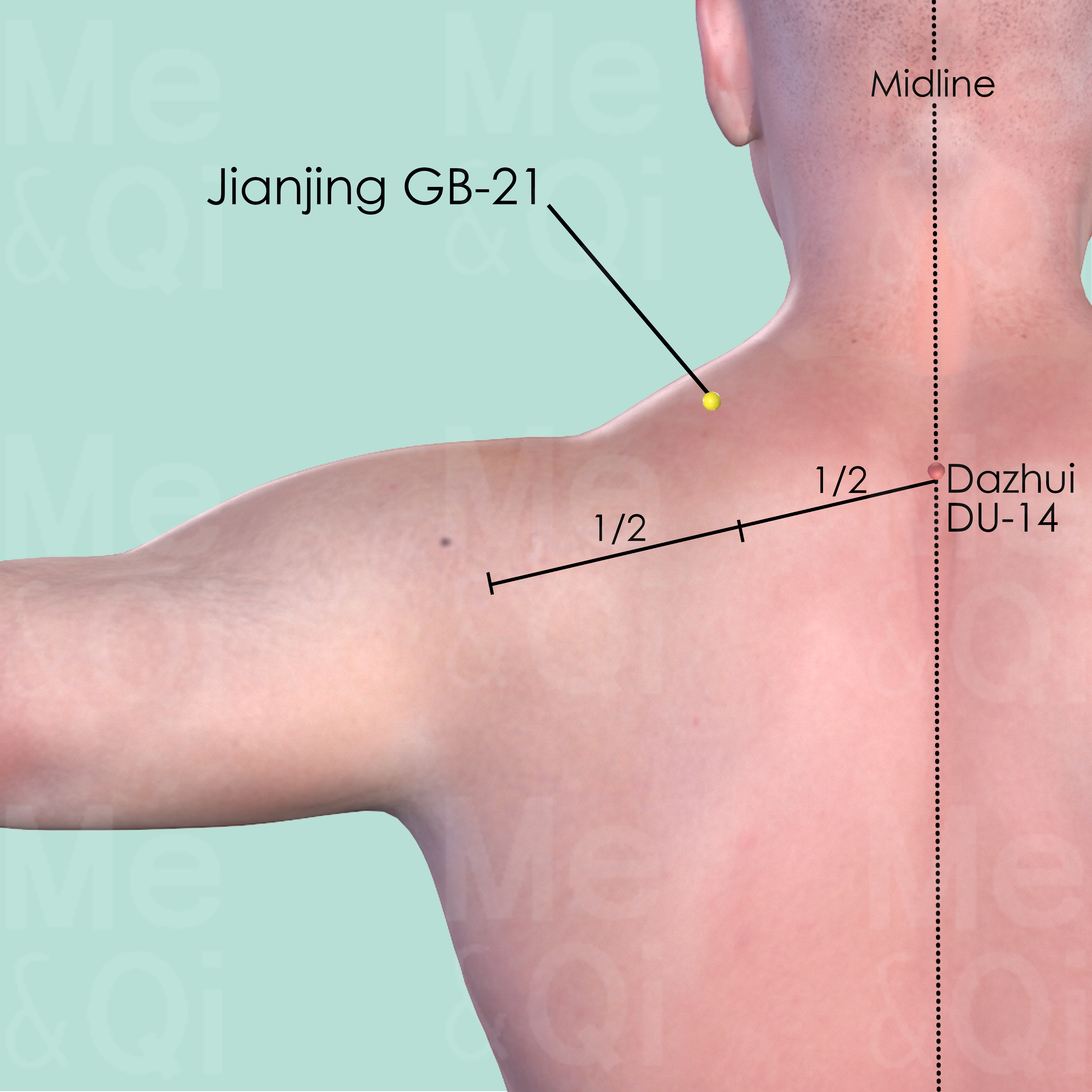
Jianjing GB-21
Midway between Dazhui DU-14 and the lateral extremity of the acromion, at the highest point of the shoulder.
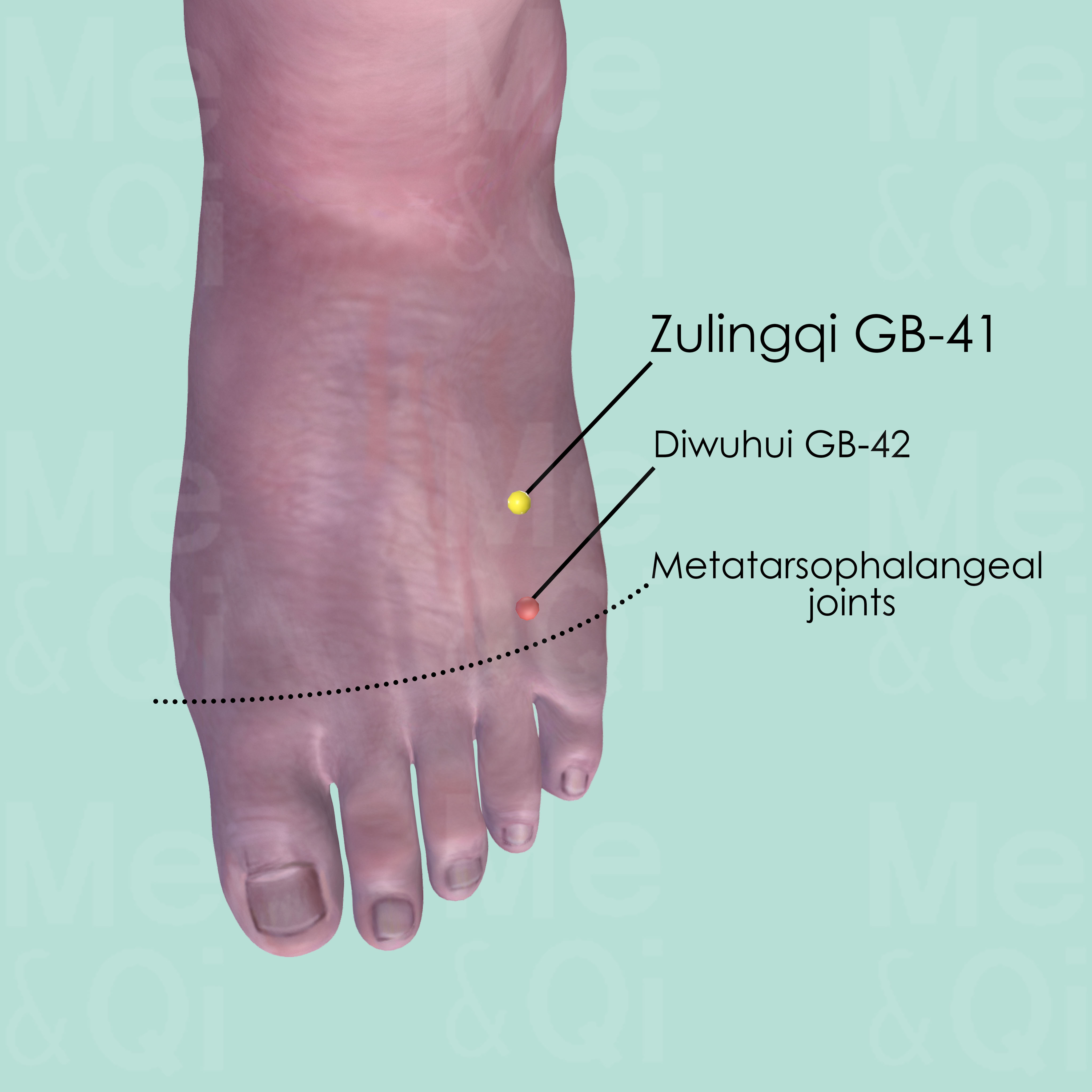
Zulingqi GB-41
In the depression distal to the junction of the 4th and 5th metatarsal bones, on the lateral side of the tendon of extensor digitorum longus muscle of the foot.
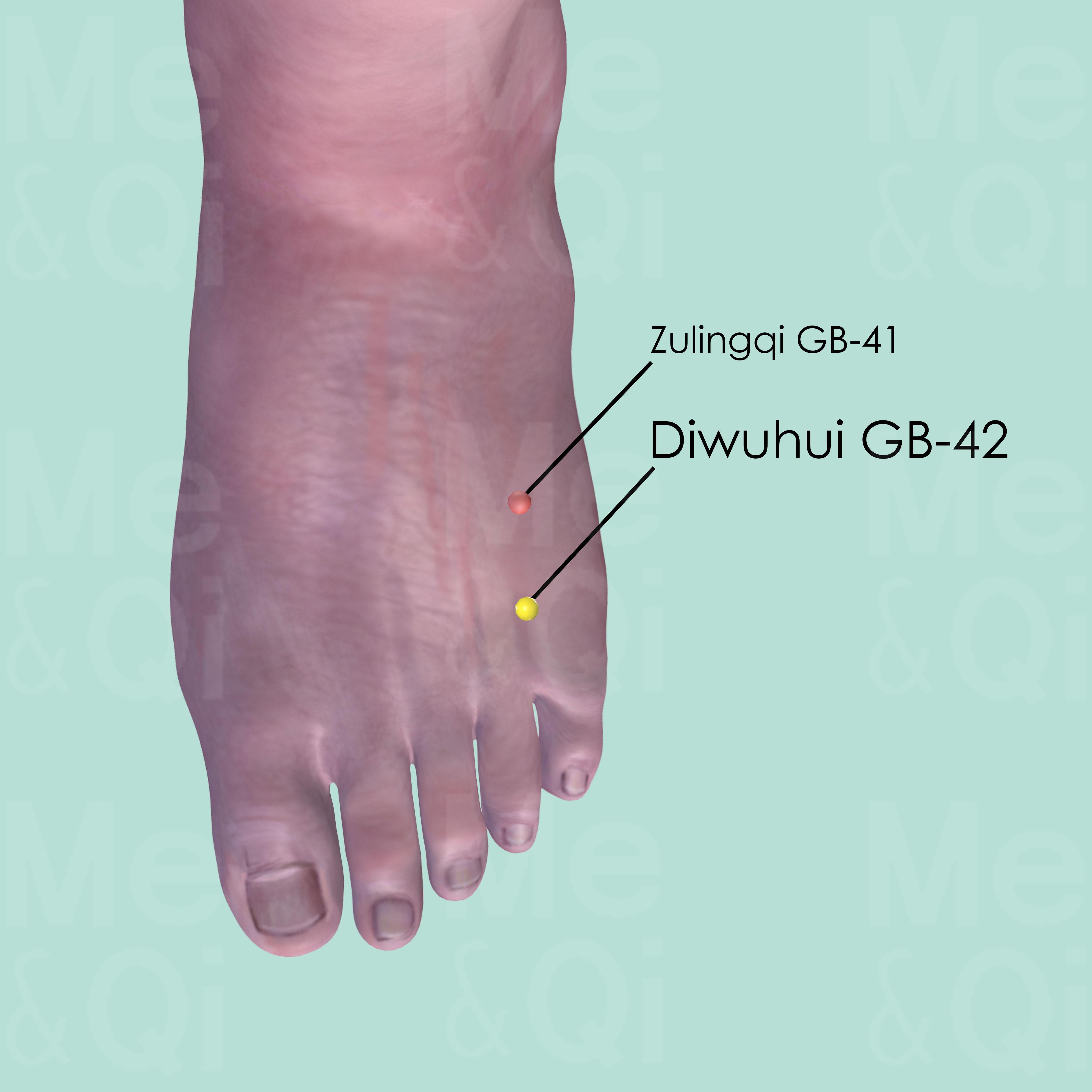
Diwuhui GB-42
Between the 4th and 5th metatarsal bones, on the medial side of the tendon of extensor digitorum longus muscle of the little toe.
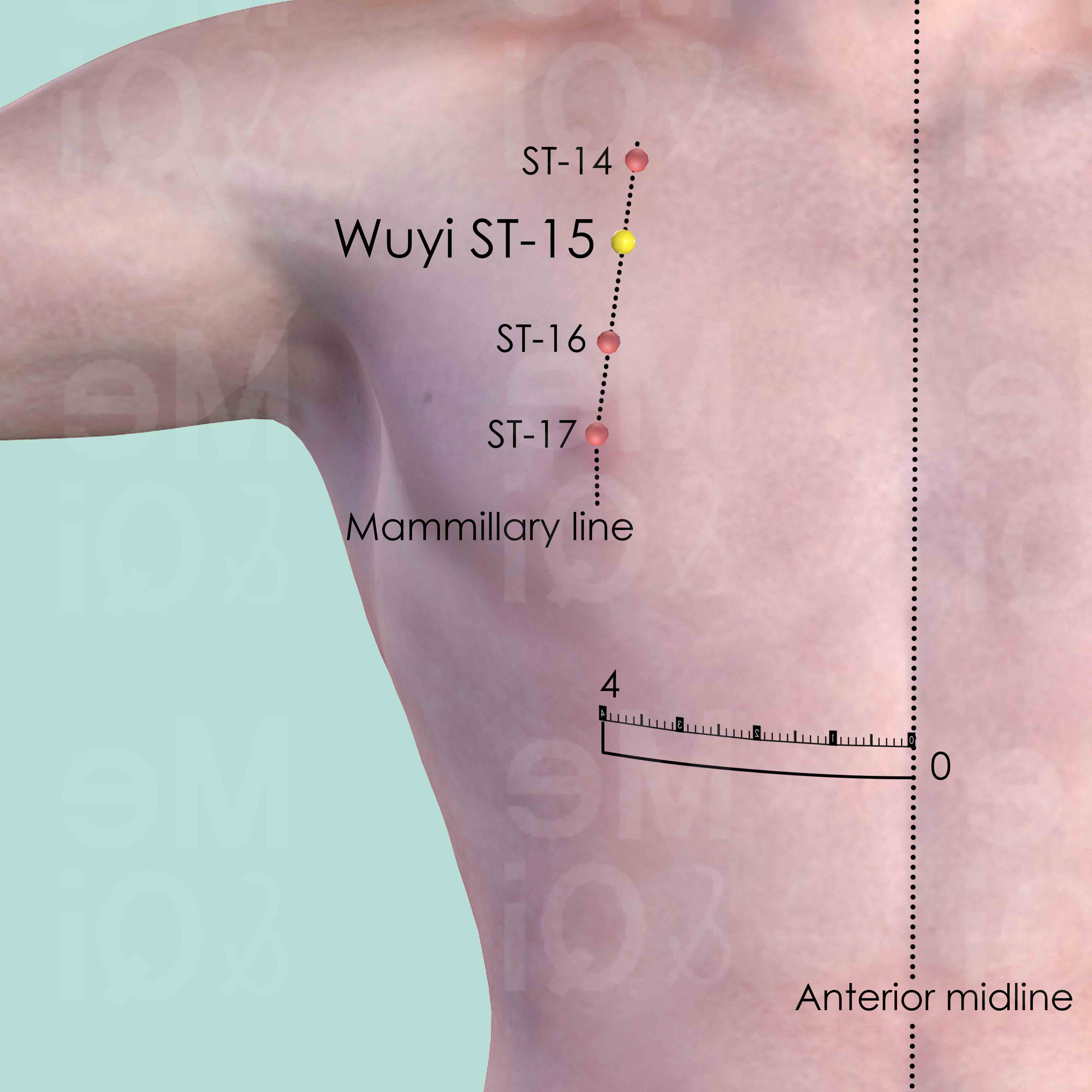
Wuyi ST-15
In the 2nd intercostal space, on the mammillary line, 4 cun lateral to the anterior midline.
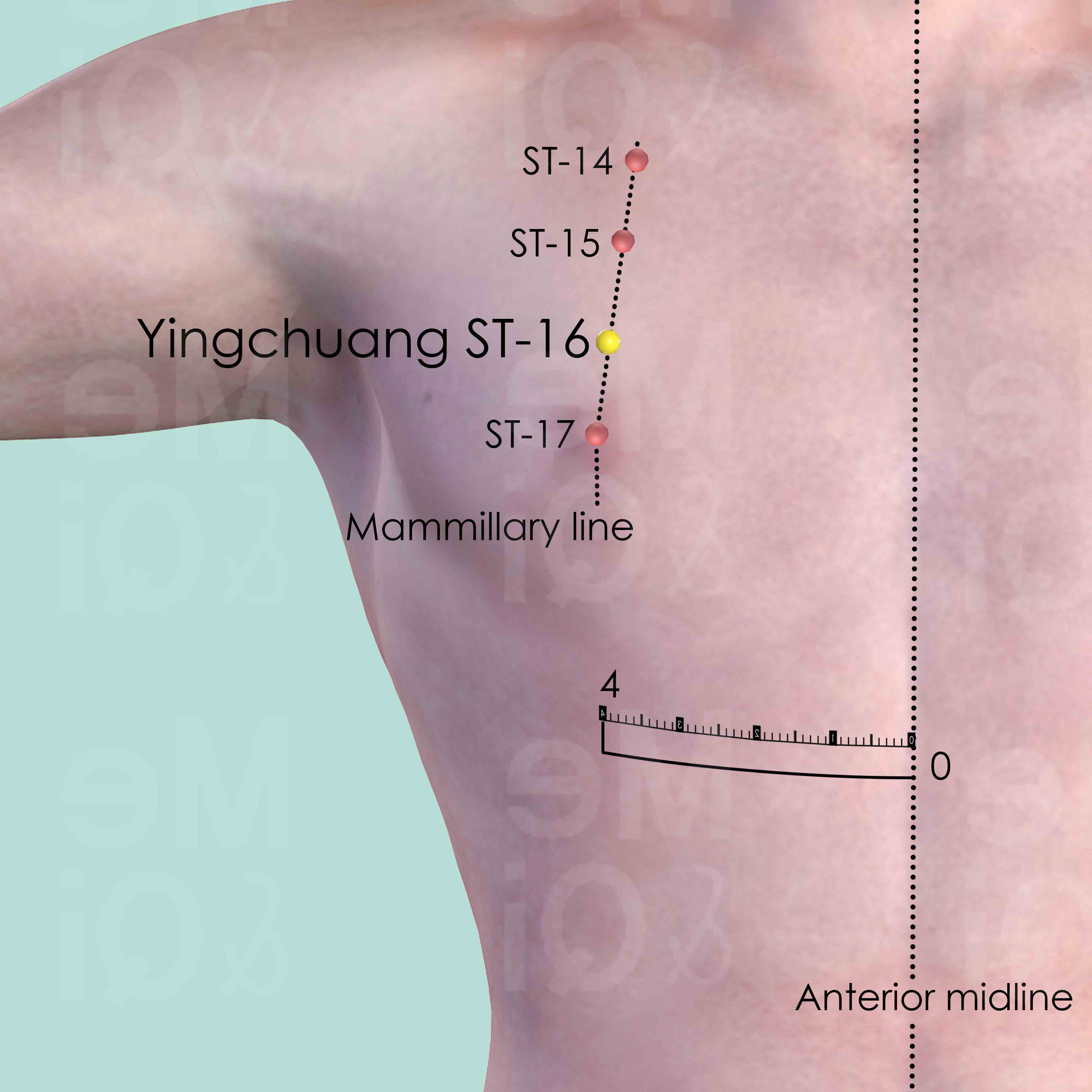
Yingchuang ST-16
In the 3nd intercostal space, on the mammillary line, 4 cun lateral to the anterior midline.
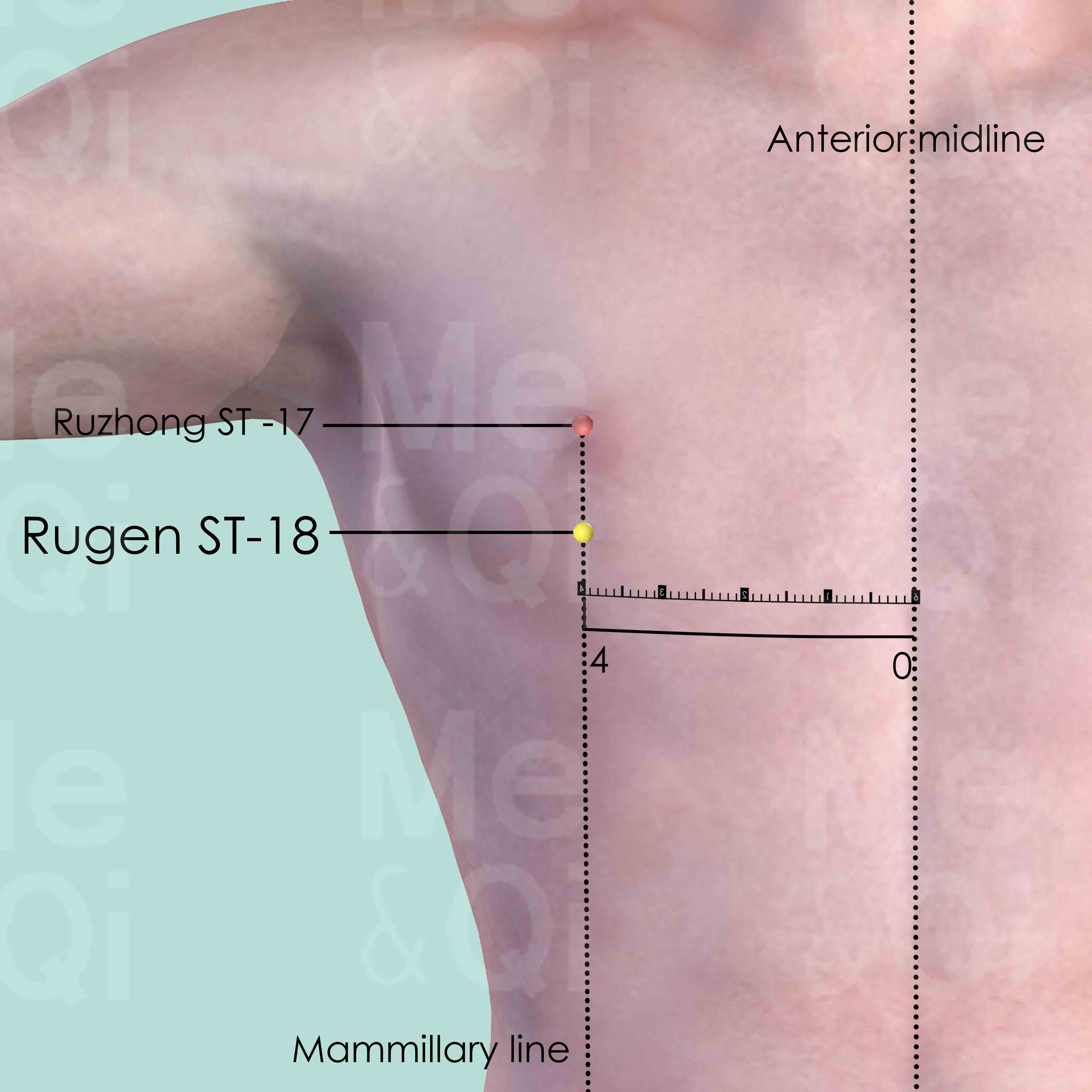
Rugen ST-18
In the 5nd intercostal space, on the mammillary line, 4 cun lateral to the anterior midline.
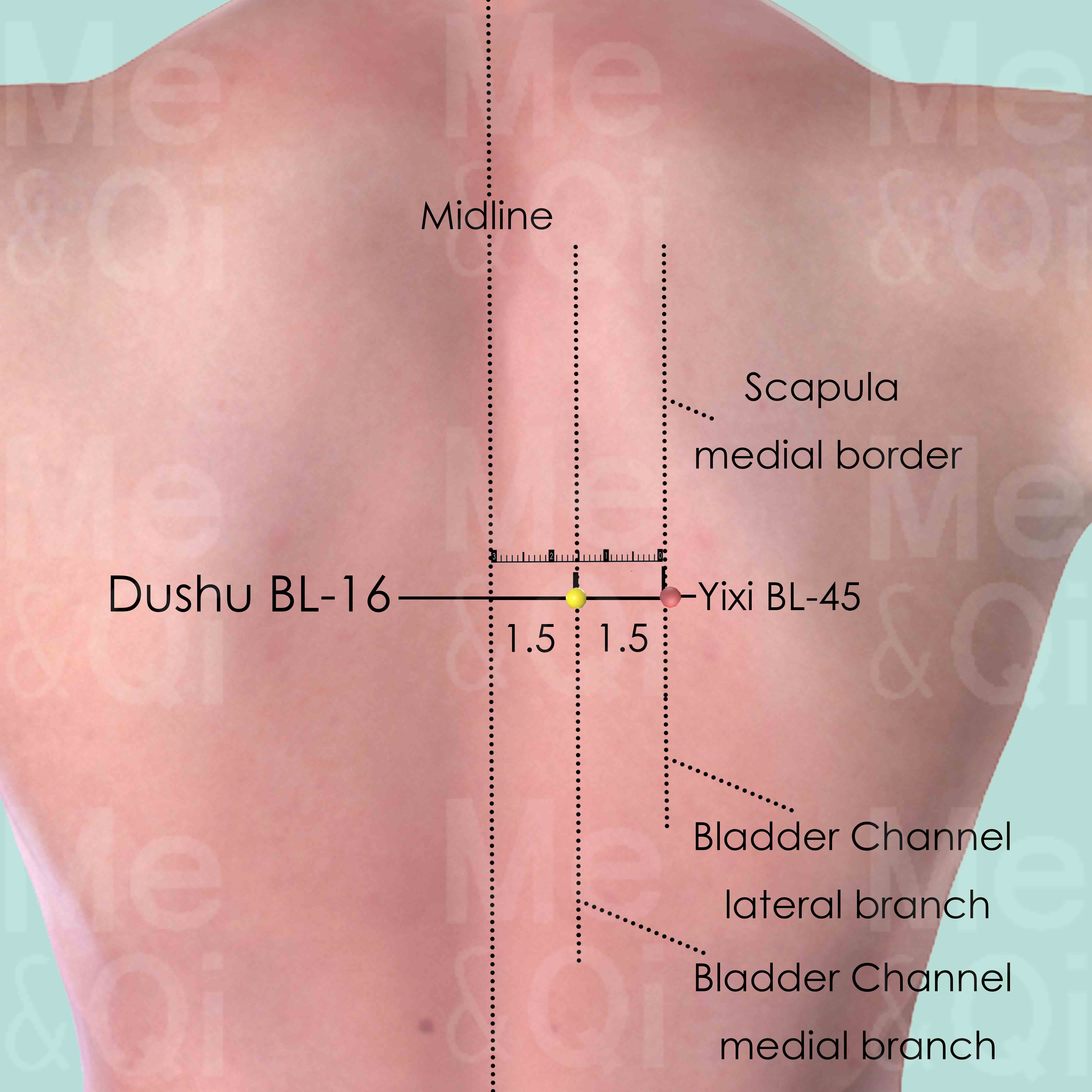
Dushu BL-16
1.5 cun lateral to the lower border of the spinous process of the 6th thoracic vertebra (T6).
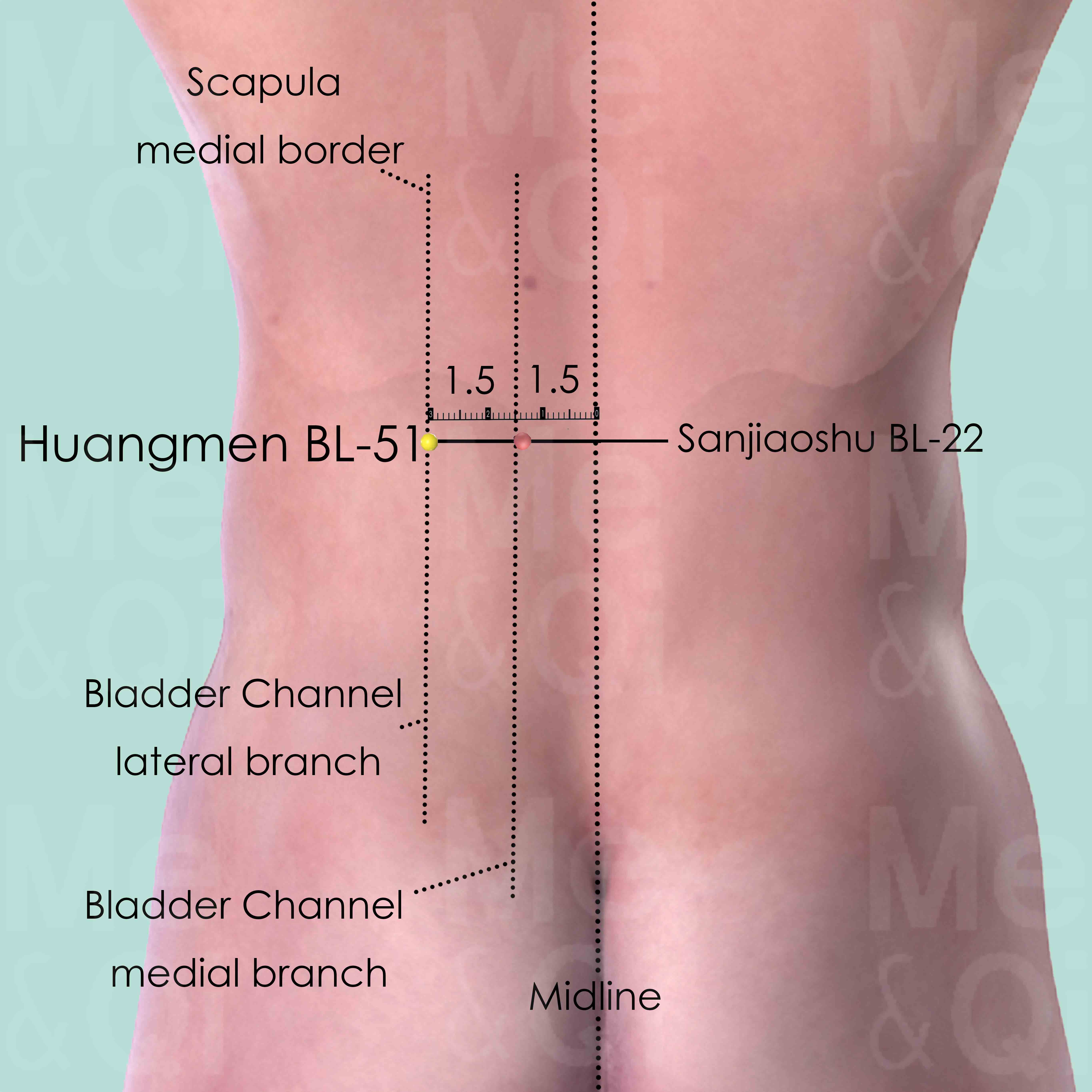
Huangmen BL-51
3 cun lateral to the lower border of the spinous process of the 1st lumbar vertebra (L1).
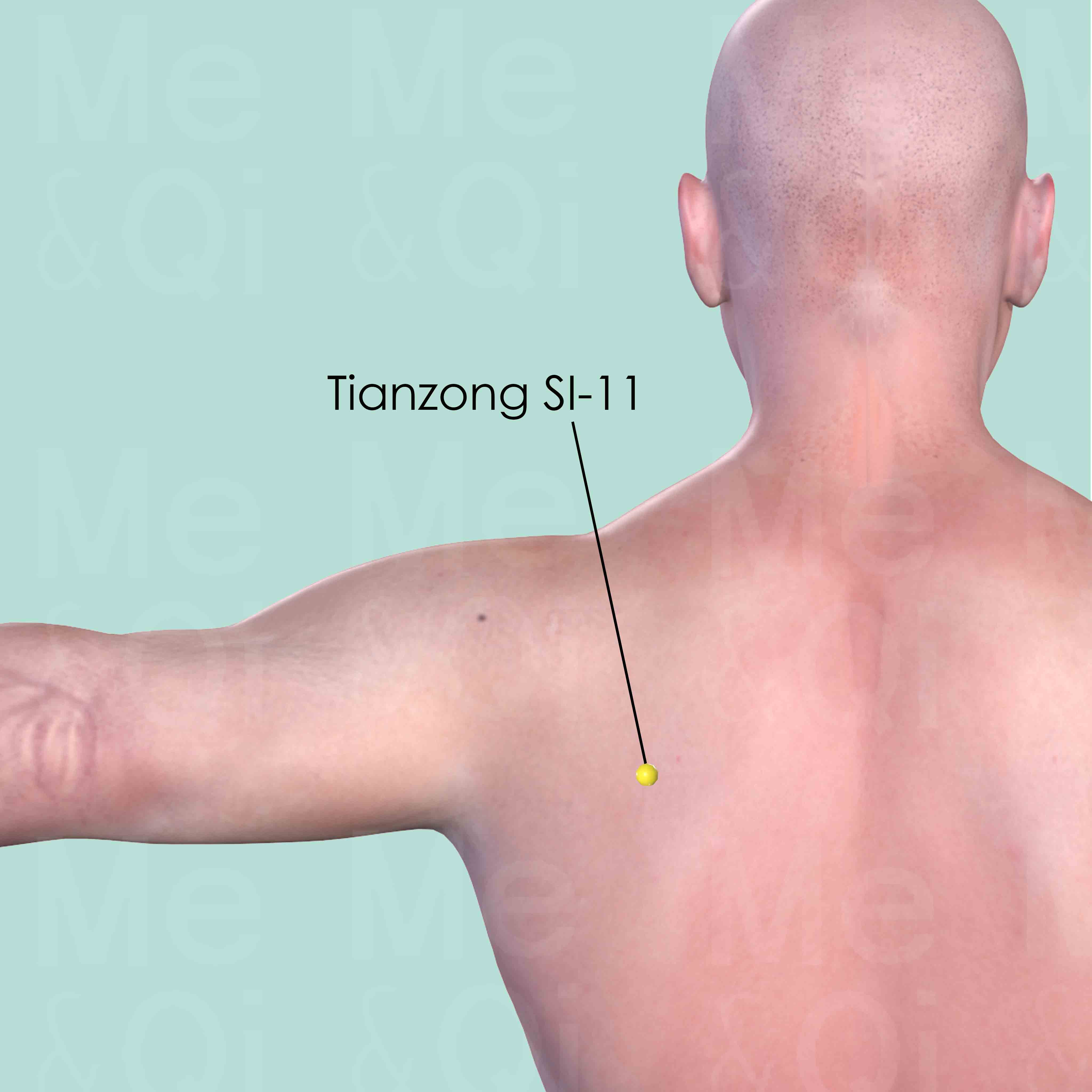
Tianzong SI-11
In the intrascapular fossa, at the junction of the upper and middle third of the distance between the lower border of the scapular spine and the inferior angle of the scapula.

